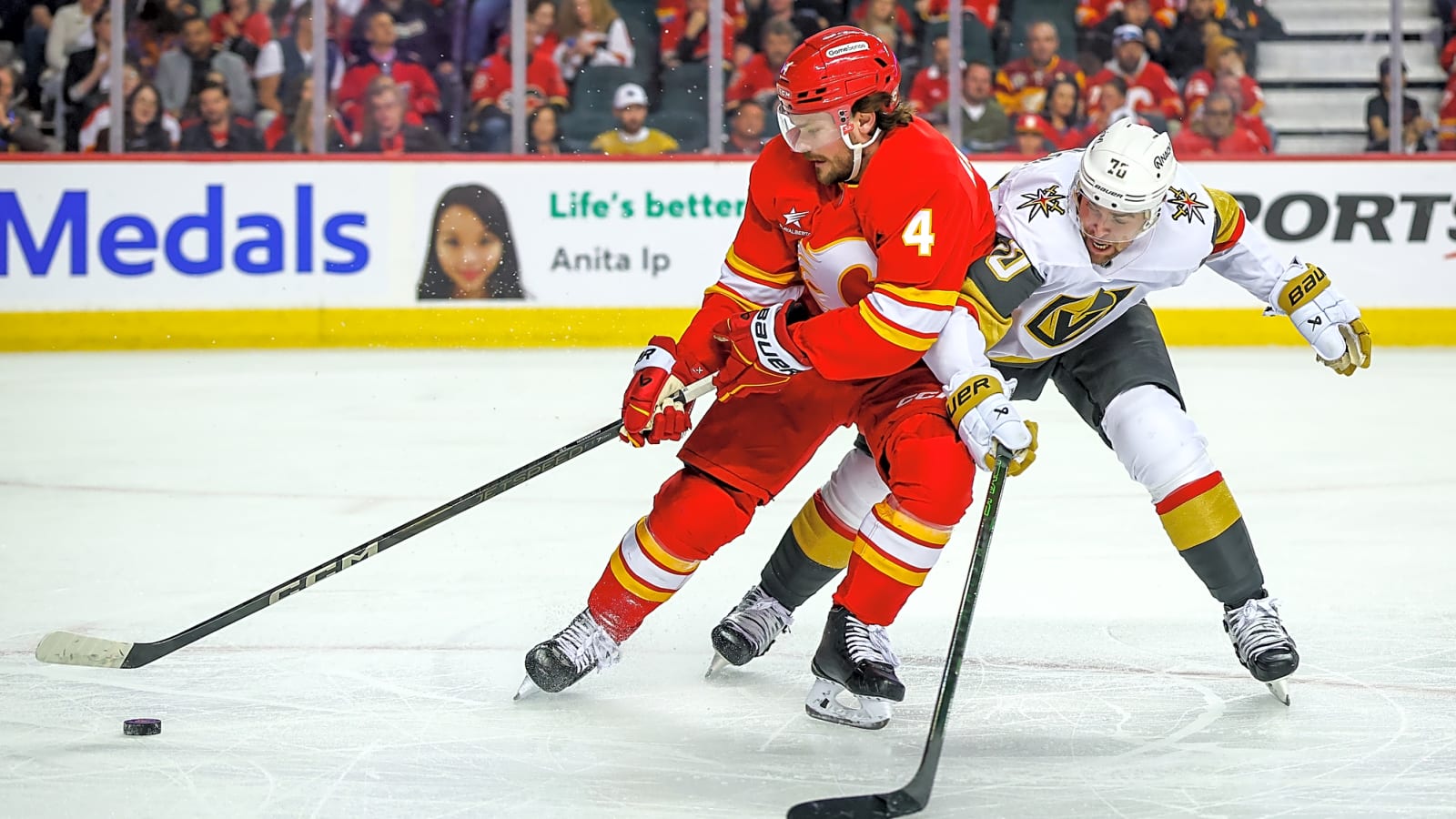
The ongoing story of the summer in Calgary has been whether the Calgary Flames trade Rasmus Andersson, and if they do, when, to whom, and for what in return. This saga has already dragged on for months and seems to have no clear end in sight.
The biggest problem with it has been that it seems to have been dictated by Andersson himself. He has reportedly nixed multiple deals with his unwillingness to re-sign with a new team and only wants to be traded to the Vegas Golden Knights. Now, were he a player on a large contract with a full no-movement contract, it would be understandable why the Flames would have a tougher time moving him, but in this case, Andersson has a six-team no-trade list, which means the Flames can deal with any of the other 25 teams.
On top of that, he is in the last year of an incredibly friendly $4.55M deal, which many teams can easily absorb. Only 11 other teams are unable to afford his contract as things stand today.
The Flames appear to have put this completely in Andersson’s court, allowing him to do what is best for him with seemingly little regard for the team, his teammates, or anyone else. This is not how it works on any other team, and the Flames should utilize the leverage that they do have to move him. Here’s what they can do.
Play the game on the Flames’ terms, not Andersson’s
The Flames must handle this trade based on their internal valuation of Andersson, rather than where he wants to go. With the exception of the six teams on his no-trade list, the Flames need to sell Andersson to the highest bidder as he is right now—or, as they say in real estate, in “as-is, where-is condition.”
Andersson at his current value with his current contract amount is a steal of a deal. Teams trading for him have a full year to prove that they are a team he should sign with. They also have over half a year to then flip him to a contender should he not want to sign.
The Flames did this with Adam Fox when they sent him to the Carolina Hurricanes. The Hurricanes then sent him to his preferred destination, the New York Rangers, a year later. While there are some key differences related to age and production, this type of move is more than possible with the time that the Flames have. Smart NHL general managers would look at Andersson as shrewd business. Worst case, they trade assets for him, hold him through the season with the knowledge that he will need to prove his worth in his contract year, then move him at the deadline for a haul.
It’s time to play hardball with Andersson
The other option that the Flames have is to play some hardball with Andersson. This team, under Craig Conroy, has been allowing players to dictate terms, and frankly, it’s time that they change that. While the Flames could technically waive him and let a bottom-feeding team pick him up for nothing, that doesn’t seem like smart business.
Instead, with the Flames looking to get younger, they could drastically reduce his playing time or scratch him over the course of the year. This wouldn’t even be a stretch to do with their current lineup. The Flames could simply say that they re-signed Joel Hanley because they wanted him to play with MacKenzie Weegar.
They also have defensive defenceman Kevin Bahl, who seems like a natural fit to play with offensive rookie defenceman Zayne Parekh. This leaves Andersson playing the third pairing with one of Jake Bean, Daniil Miromanov, Hunter Brzustewicz, Brayden Pachal, or one of the other defencemen in the AHL.
Reduced ice time could deflate Andersson’s next contract
Andersson would then be stuck playing 10 to 12 minutes a night without any power play time and unable to really boost his value going into a contract year. This is a big deal for players, as their production in their draft year directly impacts their next contract. With Andersson signing his big-money deal, this could cost him $2 to $3M per year on a long-term deal. It could even cost him the chance at a long-term contract at all next summer. That could be a difference of as much as $24M.
Is this a kind thing for a team to do to a player? Not at all, but at the end of the day, sports is a business, and that business has to do what is best for itself. Other NHL teams have done this. The New York Rangers reportedly used similar tactics to force Jacob Trouba to agree to a trade with the threat of being put on waivers.
The Calgary Flames need to do right this summer
Building a happy, healthy culture is important in any organization. However, starting a season with this clear media circus is not going to be good for that culture. The Flames know that Andersson needs to go sooner rather than later. But they need to start putting their chips on the table here.
It’s well past time that this team exercises its muscles with Andersson. They must do right by the other guys in the locker room and the fan base.
More must-reads:
- Three NHL teams that are having the best offseason so far
- NHL Western Conference free-agency recap
- The 'First-overall NHL Draft picks' quiz
Breaking News
Trending News
Customize Your Newsletter
 +
+
Get the latest news and rumors, customized to your favorite sports and teams. Emailed daily. Always free!








